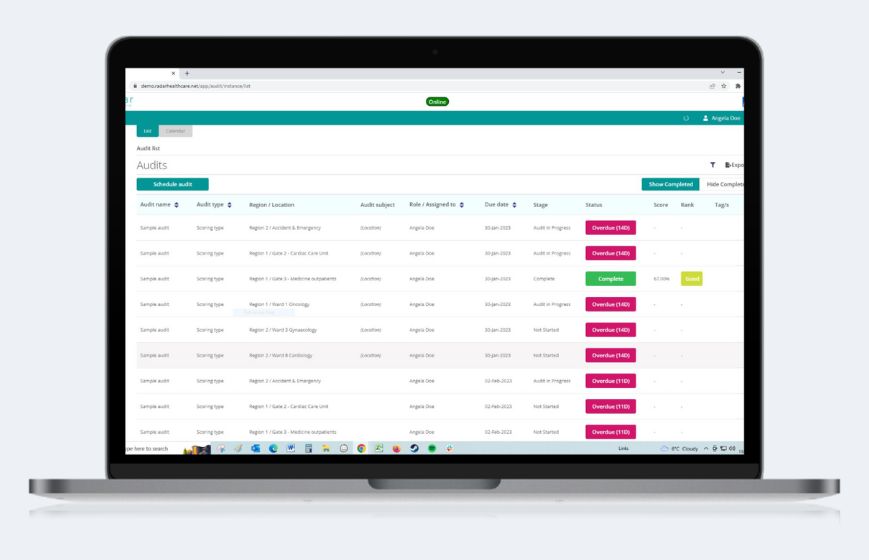Essential Tips for a Successful Integration: Insights from an Expert
Tags:
 Integrating new systems or software into existing IT infrastructure and digital operations can be a complex, overwhelming, and challenging process. Nevertheless, implementing interoperable software can be invaluable to improving care quality by minimising risks of human errors, improving data integrity, and reducing time spent on analysis and transferring data. But where do you start?
Integrating new systems or software into existing IT infrastructure and digital operations can be a complex, overwhelming, and challenging process. Nevertheless, implementing interoperable software can be invaluable to improving care quality by minimising risks of human errors, improving data integrity, and reducing time spent on analysis and transferring data. But where do you start?
Mike Taylor, CTO at Radar Healthcare and industry expert shares insight for a seamless integration experience in our podcast, What the HealthTech?.
In this blog, we underpin the three key top tips into an easy-to-digest summary. From engaging in early technical conversations to combating procrastination and prioritising thorough testing, these tips will pave the way for successful integration.
Tip 1: Engage in Early Technical Conversations
One of the primary reasons for integration hiccups is the lack of early technical involvement. For instance, imagine an IT department at a renowned institution like MIT, where technical challenges are commonplace. When a new integration project lands on their desks with a tight deadline, the absence of pre-procurement technical conversations can lead to confusion and delays.
To mitigate this, it is crucial to engage technical experts right from the beginning. By involving them in the procurement stage and discussing APIs and integration requirements in advance, you can ensure a smoother integration process. Addressing security concerns and getting everyone on board early sets the foundation for success.
Tip 2: Tackle Procrastination Head-On
Procrastination is a common trap that can hinder integration projects. Past experiences have shown that delaying integration tasks can result in a painful and rushed process. When faced with a new integration requirement, individuals often postpone it until later, causing unnecessary stress and potential setbacks.
To avoid this, adopt the “eat the frog” approach, which means tackling the most challenging tasks first. By prioritising the integration process and meticulously planning each step, you can minimise last-minute rushes and unexpected obstacles. Remember, proactive planning is key to successful integration.
Tip 3: Emphasise Thorough Testing
Testing is an often-overlooked aspect of integration projects. With tight deadlines and mounting pressure, testing tends to become an afterthought, leading to potential issues down the line. While it’s tempting to cut corners and opt for minimal testing, doing so can result in incorrect data and unforeseen complications in the future. Allocate dedicated time and resources for comprehensive testing to ensure that all systems are functioning correctly, and data integrity is maintained. By prioritising thorough testing, you can detect and address any issues before they become significant problems that impact your operations.
Closing comments from Mike Taylor, CTO
“Integrating new systems and software can be a challenging endeavor, but with the right approach, it can be a smooth and successful process. By approaching the process with the right mindset and considering the three tips above you can navigate the integration journey with confidence. Remember, proper planning, involving the right stakeholders from the start, and allocating sufficient time for testing are crucial elements for achieving a seamless integration that delivers the desired outcomes.
At Radar Healthcare one thing that we do really well when onboarding our customers is understanding from the get-go their integration requirements and goals so that we can try to make the process as easy as possible as well as help them start creating safer outcomes and achieving their objectives quicker. “
Take a look at the resources below, for more on our integration capabilities.
-
Episode 14: Integrating for Success
Chloe Weatherhead speaks to Mike Taylor, CTO, about the benefits of integrating systems and what to think about when considering whether the different systems in your organisation need to ‘talk to each other’. >
-
Nourish Care integration
The integration will allow care organisations to record incidents, such as falls, in the Nourish app for that information to transfer to Radar Healthcare for analysis and reporting opportunities. >






